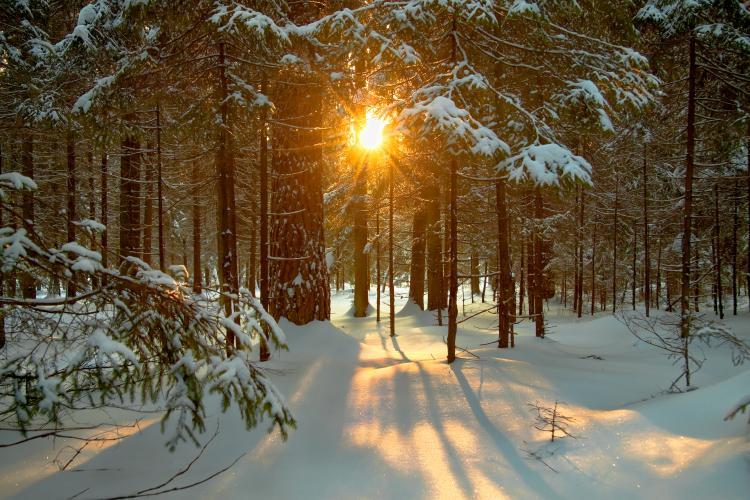
Date:
Most of us dread the first day of winter. We think of it as the shortest day, the cold day, the dark day. But the first day of winter (aka the winter solstice) actually is the gateway to Spring and has an astronomical connection. In fact, it’s all about the astronomy! Here’s how.
Solstices happen because the Earth’s axis of rotation, relative to the plane of our orbit, is not vertical, but tilted 23.5 degrees. The Earth got whacked early in the solar system’s history and now we have a tilt! Because of the tilt, as the Earth orbits the sun during the year, different latitudes experience gradually shifting amounts of sunlight from season to season. Without that tilt, we wouldn’t have seasonal change; at your location the sun would rise and set at the same time every day and we’d have no seasonal celebrations.
When we reach winter solstice, the northern pole of the Earth experiences its maximum tilt away from the sun. We see this max tilt away as the sun’s lowest path through the sky for the year on that day. In the southern hemisphere, the southern pole experiences its maximum tilt towards the sun and the sun makes its highest path across the sky. The result? In the south, with many more hours of daylight, it’s the start of summer and warm temperatures. In the north, it’s the opposite; the fewest hours of daylight for the year mark the start of the winter season with its cold temperatures, snow, and ice.

The solstice actually is just a celestial moment in time, a point in the earth’s orbit around the sun when the polar regions of Earth have their maximum tilt either toward or away from the sun. The solstices always occur on or about the same dates, Dec. 21 or June 21 and on those days the event lives up to its name. The word solstice means ‘sun stand still’ and for a brief time around those dates, the sun’s position above the horizon at noon languishes for a few days - it stands still - before the tilt starts to shift back the other way again.
The coolest thing about all this for us in the north is that about two weeks after winter solstice, we begin gaining minutes of daylight as the sun’s path elevates a bit more every day. Sunrise starts to come earlier, sunsets are coming significantly later and just twelve short weeks later it’s spring again. So don’t think of the winter solstice as just the darkest coldest day, think of it instead as the kickoff to Spring!


